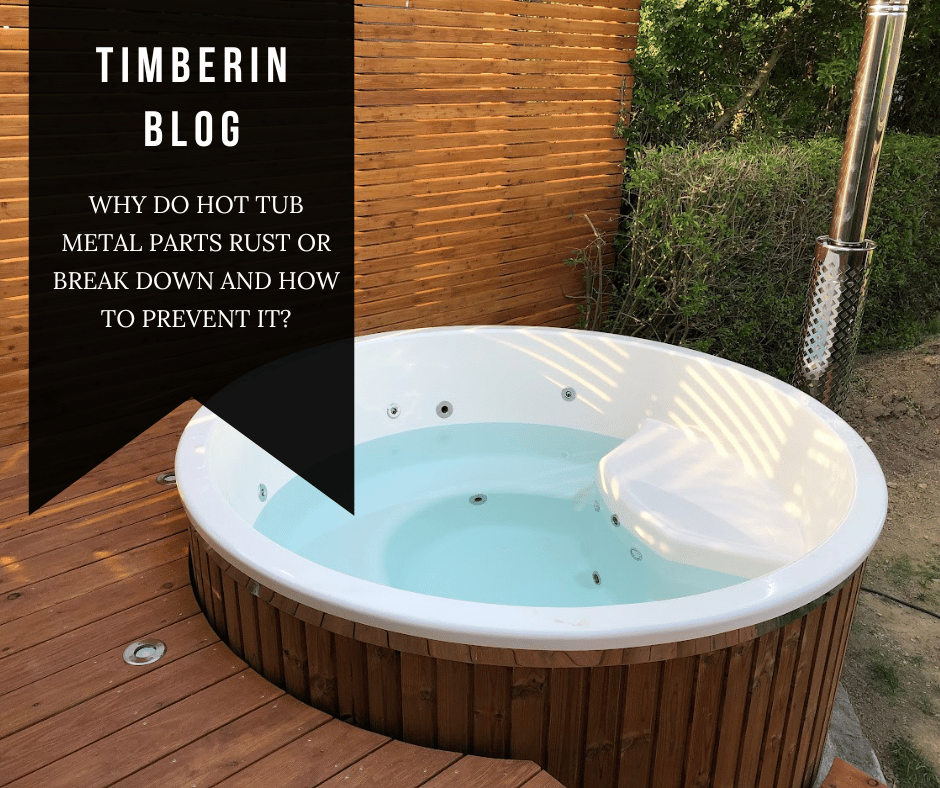Having rust in your hot tub can be a serious problem. It can look unappealing, can hamper the bathing experience, and can become a danger to all the metal parts in your tub.
Such problems can occur due to insufficient maintenance, there can be leakages that could lead to rusting. By itself, all the metal parts and the hot tub itself are made to withstand rusting. In this article, we will briefly cover the main causes of rusting and will give you a couple of pieces of advice on how to help you to prevent them or solve them to meet your criteria, your possibilities, and to have a perfect bathing experience.
Causes of rusting stains
Well firstly, hot tubs’ metal parts are rusting because of water. It can be caused by incorrect PH levels of water, using excessive amounts of chemicals or salts, or due to inappropriate parts used during the assembly of the product. Lack of maintenance can lead to additional rusting as well. It should be noted that for the first usage, you should fill up the tub and run the water through a water filtration system if it is available.
One of the causes that can lead to metal parts rusting is the chemicals that are used excessively. Chlorinated water is especially corrosive and would react to any unprotected metal and would eat it away. To prevent it, we recommend reading our article on how to test the Ph values and use the chemicals accordingly. However, it must be noted that we use 316 stainless steel for stoves and various metal connections to prevent damage caused by chlorinated or salty water (the use of salt is generally not recommended at all).
Rusting of the metal parts can happen also due to inappropriate parts used. One of the most popular problems is that various manufacturers, by trying to reduce the cost of the whole product, are using 314 or even the lower quality one – 430 steel. Neither 314 nor 430 plates of steel are resistant to chemicals.

Lack of regular maintenance could also lead to rusting and additional damage to the hot tub. Regular maintenance should become a habit and would lead to longevity for the tub. You should use a skimmer to drain out the particles or leaves from the water, then empty the tub and thoroughly clean all the visible stains. That would help combat the buildup of dirt.
Rust can also appear in small spots on the metal itself or between various parts attached to fiberglass or plastic liner. This happens due to the contact of other metal particles that are not very resistant to corrosion with the metal surface, for example, during contact with other metallic materials. Microparticles get stuck in softer stainless steel and appear as rust spots when interacting with moisture (also contained in the air). Both types of corrosion can be easily removed with a polishing sponge and will no longer show up.
Problem-solving
Firstly, try to clean a small area and see how it goes. If everything is all right, then proceed further and clean the entire tub and all the parts and then rinse the tub with clean water. Below are some homemade remedies to do that:
1. Tartar cream and hydrogen peroxide
For this method to work, you will need to use both Tartar cream and hydrogen peroxide. Combine the two ingredients together and mix until it attains a thick paste. Apply the paste to the affected area and leave it on for about twenty minutes. When you think the rust is all gone, scrub off the now-dry paste with a scouring pad or pumice stick. This will dissolve the rust.
2. Using Baking soda and vinegar
It is also one of the most natural homemade solutions. All you need to do is mix baking soda with water and pour the mixture generously over the rust stain.
Conclusion
To sum up, the metal parts rust because of various reasons, often related to water quality and composition or poor maintenance. To have a fantastic bathing experience – proper upkeep, maintenance, and a correctly adjusted water´s Ph value, or even quality of the water itself – is mandatory.


